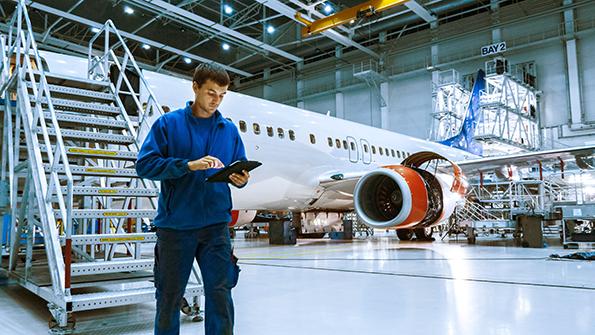
As the global airline business resumes its historical trend of steady annual growth, many stakeholders will be happy to forget much of what the recent downturn brought—drastic drops in travel demand, idled fleets and constant business strategy revisions in response to it all.
But not everything brought on by the downturn will be tossed aside as traffic returns. Some changes have spotlighted new ways of doing business that stand to benefit industry long after the pandemic is under control. Parking aircraft for prolonged periods but stopping short of full storage has spawned new short-term preservation practices, for instance.
Among regulators, the effectiveness of remote technology helped them keep on top of their oversight tasks amid travel restrictions. The European Union Aviation Safety Agency (EASA) is in favor of retaining some of these remote practices but is looking carefully at what should change once travel restrictions are no longer an issue.
“In some domains, it’s more easy to do things remotely than in other areas,” EASA Deputy Flight Standards Director Ralf Erckmann said during the 2021 Modification and Replacement Parts Association (MARPA) Spring Virtual Event in mid-May. Remote technology “has a lot of interesting added value,” he added. “However, it has challenges as well.”
Like many regulators, EASA rolled out guidance for using remote technology in certain circumstances. An August 2020 document laid out guidelines for conducting remote training for mechanics and other personnel. EASA also covered issues such as live-streaming walk-arounds as part of facility audits.
The new methods helped bridge the gap created when even simple tasks—such as traveling for in-person audits—became challenging or impossible due to travel restrictions. Many in the industry are lauding the changes, saying they are long overdue as a way to make oversight more flexible and stretch regulatory resources without compromising safety.
But EASA is finding that the new methods have their limits. Erckmann cited several specific examples, including product audits and observing work “practices” as being “not effective” uses of remote oversight.
“Product audits, seeing the aircraft—it’s obvious that it’s more difficult to do these remotely. But if, for instance, we are monitoring a training course, it’s easy to do [via] remote participation,” he said.
In some cases, connectivity and infrastructure create problems for any remote work. Like many regulators, EASA has certificate holders in areas of the world that lack the level of connectivity many take for granted. Such limitations must be factored in when considering how much industry should be expected to lean on technology to help regulators out.
EASA is planning new guidance on best practices for using remote technology that will reflect lessons learned and industry feedback, Erckmann said. “We are learning. We will do certain things remotely, but . . . not everything,” he said. “The toolbox is growing, and we are considering the new methods for the future.”



